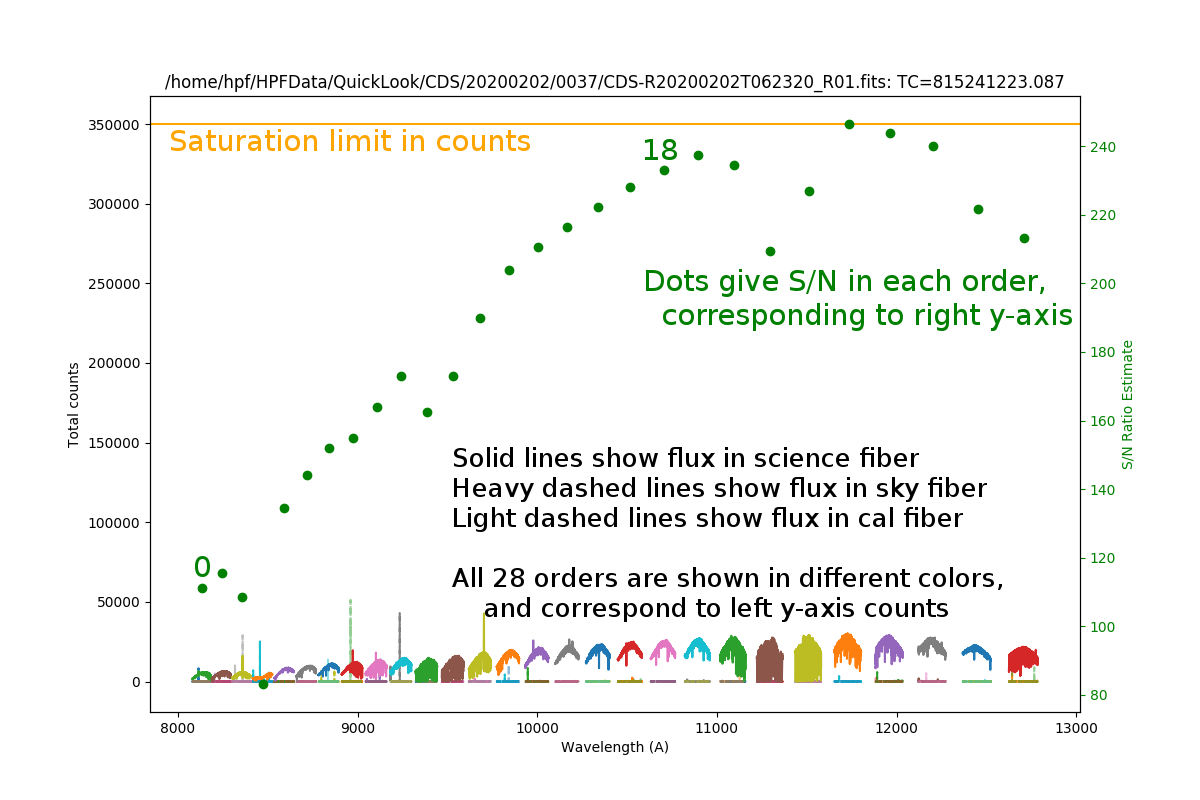HPF SNR estimates
Beginning in trimester 2020-1, we are providing SNR estimates for all HPF exposures. As defined by the HPF team, this SNR is calculated per 1D extracted pixel (corresponding to ~10 pixels on the HPF echellograph) around 1.07um (order 18). This is what the HPF exposure time calculator tool produces, as well. These SNR estimates now appear in the "Objects Observed" page of your program on Hydra, as shown in green highlighting in the screenshot below:
 Also note that "Sky conditions" indicate the average sky surface brightness (in mag/arcsec2) in a given filter, and the average sky transparency given in parentheses. These values come from the guide stars used during each target's exposure.
Also note that "Sky conditions" indicate the average sky surface brightness (in mag/arcsec2) in a given filter, and the average sky transparency given in parentheses. These values come from the guide stars used during each target's exposure.
HPF quick-look spectra
Starting in February 2020, PNG snapshots of quick-look spectra are being copied to TACC in your raw data folders, like: /work/03946/hetdex/maverick/20200206/hpf/raw//*.png
Shown below is an annotated example of one of these spectra. These are not fully reduced data but are intended to give a sense of the data quality, and are used by the RAs on site to evaluate your observations in real time.

Daily Goldilocks reductions
This page on HPF data reduction has more information about the data products available daily.
Last updated: Fri, 29 Dec 2023 10:40:23 +0000 stevenj

|
 |

|